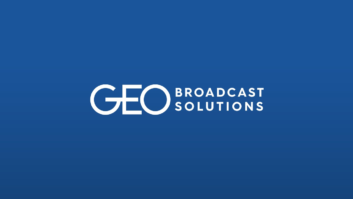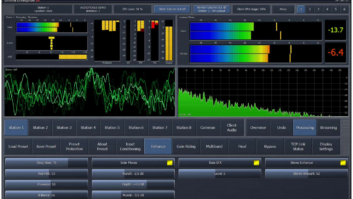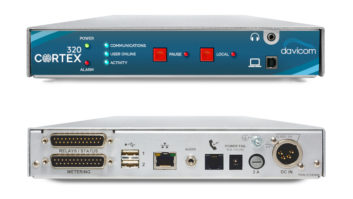New Rules Will Add Content Protection Measures to DTV. Is Digital Radio Next?
Starting in July 2005, all terrestrial digital television equipment sold to consumers in the United States will have to recognize and honor the so-called Broadcast Flag. The regulations enforcing this represent a substantial departure from past practice, and they could act as a model for other subsequent action in this country and elsewhere, including digital radio rules.
In fact, in its voluminous comments on last summer’s NOI on the subject, the RIAA suggested that just such a similar regime should be added to FCC rules for digital radio. It therefore behooves radio broadcasters to understand the generalized regulatory policy implications of DTV’s Broadcast Flag.
BF 101
The Broadcast Flag’s primary function is to prevent the “indiscriminate redistribution” of content received over terrestrial digital television broadcasts by consumers. What this euphemistic terminology really intends is the prohibition of consumers’ recording DTV broadcasts and posting the content to the Internet, via a Web site for downloads, or by using peer-to-peer (P2P) distribution.
Consider that most broadcast television content is exclusive to a particular channel, or market-exclusive to a network affiliated station; and the broad availability of the same content at similar quality levels on the Internet could have significantly negative impact on the broadcast TV business model.
A simple method of constraining such improper usage of content by consumers would be via addition of content protection (i.e., encryption) to the content before it is broadcast, then setting policies in receiver equipment to limit permissions for the content’s appropriate usage. But political exigencies make it difficult if not impossible to encrypt free-to-air (i.e., non-subscription or non-“premium”) terrestrial broadcast TV channels, so an alternative solution had to be identified.
This alternative had to allow digital broadcasts to be made “in the clear” (i.e., non-encrypted), yet still permit broadcasters selectively to constrain the subsequent usage of received content. Thus the industry settled on a method of simply “marking” (but not encrypting) content that should be protected, and mandating the behavior of receiver equipment upon reception (or local storage) of such content. Hence the nomenclature of the Broadcast Flag, by which content intended for protected status downstream is marked during broadcast.
The most significant precedent set by this approach is that the enforcement of protection (via application of encryption) is done at the receiver rather than the transmitter. Any DTV receiver sold after July 1, 2005 must apply such content protection to any program marked by the Broadcast Flag, and any downstream DTV device – such as recorders, computers or displays – must behave according to prescribed rules in their treatment of such content.
In general, these rules are intended to allow consumers to make home recordings and provide multiple displays within the home – as they would in the analog or unprotected digital environment – but to disallow Internet redistribution of flagged content.
Note that the official ATSC standard nomenclature for the Broadcast Flag is the Internet Redistribution Descriptor, as defined in the ATSC A/65B specification. This spec only sets out how the flag is to be transmitted, however, not how receiver equipment should behave when the flag is detected. The latter is set out in separate FCC rules.
Running it up the pole
A convergence of opinion from multiple industry sectors had to occur for the Broadcast Flag to become a reality. Consider that the content being protected is largely the property of Hollywood studios, yet broadcasters and consumer electronics manufacturers have to carry the bulk of the water required to realize such protection.
It is generally held that TV broadcasters accepted the flag because they were worried that without it, all high-value DTV content would eventually go to digital cable and satellite TV, which Hollywood considers inherently more secure that over-the-air (OTA) broadcasts. This doesn’t just mean movies, but also includes episodic and reality series – the bread and butter of broadcast TV – since they are also largely products of the same Hollywood-centric family of content creators.
OTA broadcasters feared that just as movies have almost completely migrated from broadcast to cable/sat TV, the beginnings of a similar process were already in evidence for other mainstays of broadcast TV content, given the success of shows like HBO’s “The Sopranos” and Bravo’s “Queer Eye for the Straight Guy,” along with the growth in PPV/subscription sports. If OTA broadcasters couldn’t keep “Friends” episodes off of Web and P2P file-sharing sites, for example, they felt that the creators of such content would find a transmission environment that could do so.
Remember also that all the major broadcast TV networks are owned by companies that have significant interests in content creation, as well (ABC/Disney, CBS/Viacom, NBC/Universal, Fox/20th Century Fox and WB/Time Warner). In fact, Fox Broadcast generally is cited as the prime mover of the flag’s conception.
The consumer electronics community has to bear even more of the load for making the flag work, however, and this group was not quite so ready to stand up and salute. Nevertheless, pragmatism prevailed among the committee that drafted the flag’s original specification – a subgroup of the influential, L.A.-based Content Protection Technical Working Group, or CPTWG, pronounced “See-Pea-Twig” – and most of its CE manufacturers ultimately went along. Discussion in this space implied that DTV would not move forward without such regulation, and among all the players, the CE industry had the most potential revenue to lose if HDTV content did not proliferate to drive further sales of big-screen TVs.
Some observers have also cited this ruling as yet another example of the far stronger and more effective lobbying of Hollywood (via the MPAA) and broadcasters (via the NAB) over similar efforts from the consumer electronics manufacturers. Consider that NAB has far more experience and funds in its war chest than does the Consumer Electronics Association, which represents the major consumer equipment makers. Perhaps more important, however, note that government officials – especially those holding elective offices – are far more likely to turn a friendly eye to the envoys of hometown broadcasters and content creators than they are to an organization like CEA, which is seen as representing largely offshore interests, i.e., mostly Japanese- and Korean-owned electronics companies.
So the DTV industry now is standing by for the raising of the flag next July. Meanwhile, at least one lawsuit remains in litigation, brought by consumer advocate Public Knowledge, which challenges the FCC’s jurisdiction in this area, and questions the fairness of rules that seem to unilaterally protect one industry’s rights at the expense of others.
Next time we’ll consider the U.S. digital radio industry’s emergence in the shadow of a soon-to-be-unfurled flag.












